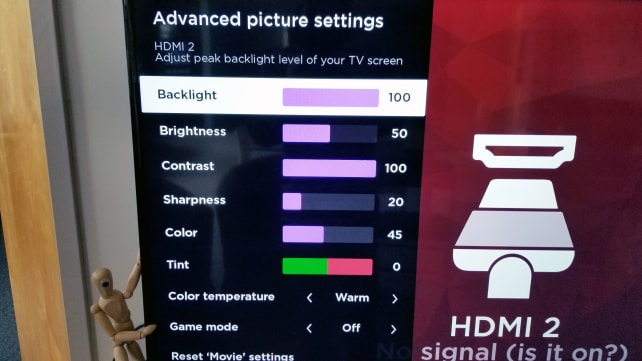How long should a TV last?

Maybe you just bought a new TV, or maybe your old TV just died. How long is that thing you just spent hundreds or thousands of dollars on going to last? And was it just your old TV’s time to go, or is something more nefarious going on?
It’s understandable to want to know how long a TV will or should last. We’ve all heard stories of the boxy Zenith CRT in grandma’s basement that’s still capable of producing a grainy picture after 20 years.
But will an LED TV you buy in 2019 last that long? Or an OLED? I’ve done my homework (and a lot of hands-on testing), and here’s what you need to know.
How long should an LED TV last?
Let’s say you purchased one of our favorite budget TVs: the 55-inch TCL 6 Series.
This TV has a lot of moving parts from a component standpoint, but generally, the “LEDs” in its backlight are what are going to fail first. The average lifespan of an LED at maximum or close-to-maximum brightness is 40,000 to 60,000 hours, or 4.5 to 6.8 years.
For sake of ease, let’s say it’s 5 to 7 years, with the understanding that you aren’t watching TV for 24 hours a day (I hope). In fact, it’s around 13 years at eight hours a day, which isn’t anything to sneeze at. While these are all averages, they can be applied to any TV that uses an LED backlight (which is almost all of them).
You can expect an LED TV’s backlight to last from 5 to 7 years on maximum brightness.
Is that long enough? It depends on the cost of the TV and how avidly you want to keep up with technology. Where TV tech is concerned, 5-7 years is basically a lifetime. For example, seven years ago, a 50-inch full-HD “dumb” TV ran you around $800. Nowadays, you can get a 55-inch smart 4K HDR TV for under $500.
That said, just because you probably should upgrade your TV after 5-7 years doesn’t mean everyone will want to, and even if relative costs are cheaper, $500 is still $500. But it’s much more likely that you’ll want to replace your TV with something bigger and better before it ever dies. (If you are looking to upgrade, check out our favorite big screen TVs under $1,000).
Fortunately, if you do want to make sure your TV lasts as long as possible (especially if you think you may gift it to your friend, children, or put in the bedroom some day), there is an easy way to ensure your TV lasts longer than average.
How can I increase an LED TV’s lifespan?

Credit: Reviewed / Lee Neikirk
This is really simple. The LEDs last 5-7 years when they’re at maximum brightness. So if you want to increase that lifespan, just turn the backlight down!
When they’re first set up out of the box in your living room, TVs are usually in “Standard” or “Energy Saving” mode, which generally doesn’t look as good to people as “Vivid” or “Dynamic” mode.
But the reason Vivid or Dynamic mode generally looks best to people is because it’s a preset that maxes out the TV’s Backlight and Contrast settings, making it brighter and perceptively more colorful. Unfortunately, not only does that mode tend to obscure picture details and tire your eyes out, it wears out the LEDs in the TV more quickly.
At lower backlight settings, LEDs can last over 10 years.
So even if you don’t want to change the picture mode to something more accurate (like “Movie”), you should at least turn the backlight down to 75% or less. Your TV will look dimmer and less impressive at first, but your eyes will get used to it after a day or so. And at lower backlight settings, LEDs can last as long as 100,000 hours, or over 10 years.
What if I have an OLED TV?

Credit: Reviewed / Jackson Ruckar
OLED TVs are newer, but as you’ve probably noticed, the technology is similar. OLED means “organic light emitting diode,” and it’s like a more advanced version of traditional LEDs. As such, a lot of the same rules apply.
According to LG (the only major manufacturer of OLED panels), while OLED panels do lose brightness over time, it will take a whopping 54 years before they fall to 50% brightness. You’re obviously never going to own a TV for 54 years, and the tech hasn’t been around long enough for anyone to test that claim.
But whether your OLED TV will last 54 years or not, it will also last longer if you don’t have it at max brightness all the time. While OLED TVs don’t have a “backlight” setting (because they don’t have a backlight), their maximum output can be lowered as well.
Our editors review and recommend products to help you buy the stuff you need. If you make a purchase by clicking one of our links, we may earn a small share of the revenue. Our picks and opinions are independent from any business incentives.

